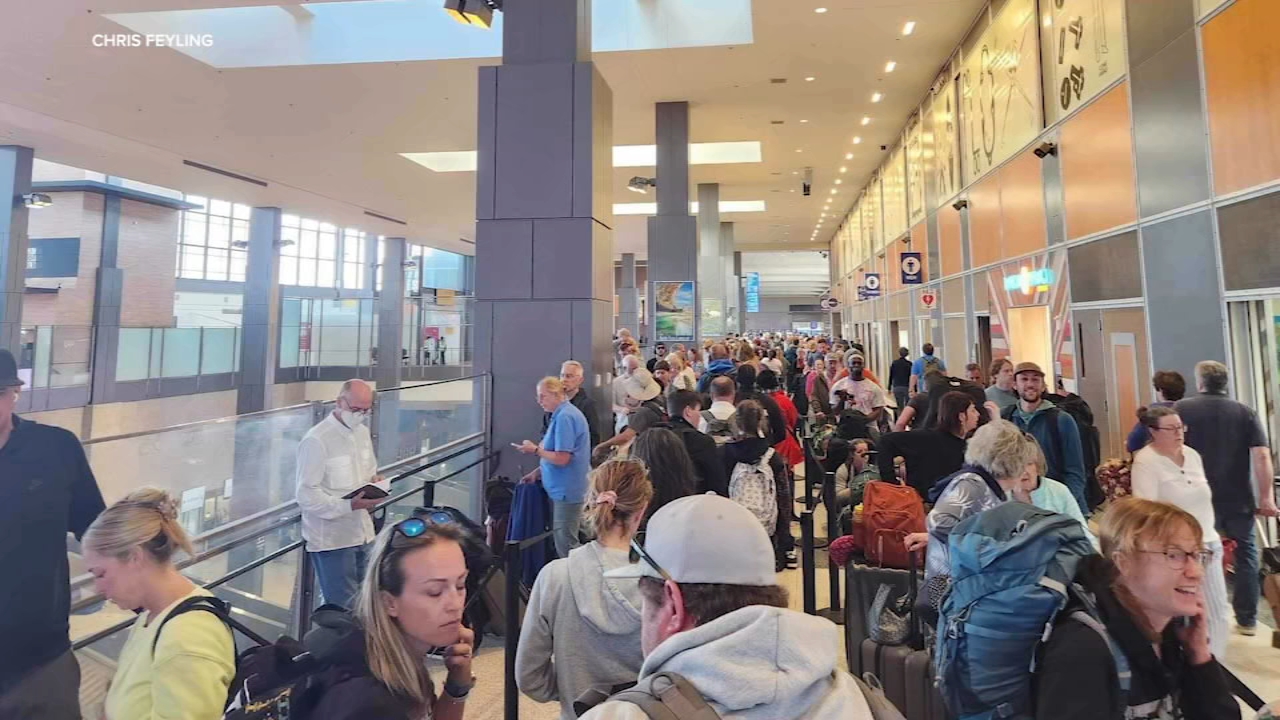Eclipse Across America: Millions of Americans witness a rare total solar eclipse

A total solar eclipse came to North America on Monday, April 8. It enteted over Mexico's Pacific coast, dashing across the U.S. from Texas to Maine before exiting over eastern Canada into the Atlantic.
The peak spectacle lasted up to 4 minutes, and 28 seconds in the path of total darkness - a 115-mile-wide path that slices across the continent. That's the place to be to experience the full eclipse - most of the rest of the continent outside the path of totality will get a partial eclipse.
WHAT IS A TOTAL SOLAR ECLIPSE?
During a total solar eclipse, the moon lines up perfectly between the Earth and the sun, blotting out the sunlight. On April 8, the moon's shadow will slice a diagonal line from the southwest to the northeast across North America, briefly plunging communities along the track into darkness.
MORE | How astronomers are helping people who are blind 'see' the eclipse

North America won't experience totality again until 2033, but only in Alaska. The next isn't until 2044, when totality will be confined to Western Canada, Montana and North Dakota. There won't be another U.S. eclipse, spanning coast to coast, until 2045.
WHICH STATES WILL GET A FULL ECLIPSE?
The path of total darkness - the path of totality - crosses 15 states.

In the U.S., the path of totality begins in Texas and will travel through Oklahoma, Arkansas, Missouri, Illinois, Kentucky, Indiana, Ohio, Pennsylvania, New York, Vermont, New Hampshire and Maine. Small parts of Tennessee and Michigan will also experience the total solar eclipse, according to NASA.
Best times, places to view the total solar eclipse
Below is a list of some American cities where the April 8 total solar eclipse will be most visible -- pending weather forecasts -- the duration of the eclipse in those locations and what time totality will begin, according to GreatAmericanEclipse.com.
Texas
- Eagle Pass, Texas, 1:27 p.m. CDT: 4 minutes, 23 seconds
- Uvalde, Texas, 1:29 p.m. CDT: 4 minutes, 16 seconds
- Kerrville, Texas, 1:32 p.m. CDT: 4 minutes, 23 seconds
- Austin, Texas, 1:36 p.m. CDT: 1 minute, 53 seconds
- Killeen, Texas, 1:36 p.m. CDT: 4 minutes, 17 seconds
- Fort Worth, Texas, 1:40 p.m. CDT: 2 minutes, 34 seconds
- Dallas, Texas, 1:40 p.m. CDT: 3 minutes, 47 seconds
Pearland, Texas kindergartners on Monday's eclipse: 'It looks like a banana'

Arkansas
- Little Rock, Arkansas, 1:51 p.m. CDT: 2 minutes, 33 seconds
- Jonesboro, Arkansas, 1:55 p.m. CDT: 2 minutes, 24 seconds
- Poplar Bluff, Arkansas, 1:56 p.m. CDT: 4 minutes, 8 seconds
Missouri
- Cape Girardeau, Missouri, 1:58 p.m. CDT: 4 minutes, 6 seconds
Illinois
- Carbondale, Illinois, 1:59 p.m. CDT: 4 minutes, 8 seconds
- Mount Vernon, Illinois, 2:00 p.m. CDT: 3 minutes, 40 seconds
Indiana
- Evansville, Indiana, 2:02 p.m. CDT: 3 minutes, 2 seconds
- Terre Haute, Indiana, 3:04 p.m. EDT: 2 minutes, 57 seconds
- Indianapolis, Indiana, 3:06 p.m. EDT: 3 minutes, 46 seconds
Ohio
- Dayton, Ohio, 3:09 p.m. EDT: 2 minutes, 46 seconds
- Wapakoneta, Ohio, 3:09 p.m. EDT: 3 minutes, 55 seconds
- Toledo, Ohio, 3:12 p.m. EDT: 1 minute, 54 seconds
- Cleveland, Ohio, 3:13 p.m. EDT: 3 minutes, 50 seconds
Pennsylvania
- Erie, Pennsylvania, 3:16 p.m. EDT: 3 minutes, 43 seconds
New York
- Buffalo, New York, 3:18 p.m. EDT: 3 minutes, 45 seconds
- Rochester, New York, 3:20 p.m. EDT: 3 minutes, 40 seconds
- Syracuse, New York, 3:23 p.m. EDT: 1 minute, 26 seconds
Vermont
- Burlington, Vermont, 3:26 p.m. EDT: 3 minutes, 14 seconds
Maine
- Island Falls, Maine, 3:31 p.m. EDT: 3 minutes, 20 seconds
- Presque Island, Maine, 3:32 p.m. EDT: 2 minutes, 47 seconds
Anyone outside the path of totality on eclipse day will still offer a celestial spectacle worth getting eclipse glasses for.
Best times, places to view the partial solar eclipse
- Atlanta, Georgia: 3:04 p.m., 0.846 magnitude
- Boston, Massachusetts: 3:29 p.m., 0.931 magnitude
- Chicago, Illinois: 2:07 p.m., 0.942 magnitude
- Cincinnati, Ohio: 3:09 p.m., 0.993 magnitude
- Denver, Colorado: 12:40 p.m., 0.715 magnitude
- Helena, Montana: 12:40 p.m., 0.474 magnitude
- Honolulu, Hawaii: 7:12 a.m., 0.286 magnitude
- Houston, Texas: 1:40 p.m., 0.943 magnitude
- Juneau, Alaska: 10:33 a.m., 0.064 magnitude
- Los Angeles, California: 11:12 a.m., 0.58 magnitude
- Miami, Florida: 3:01 p.m., 0.556 magnitude
- New Orleans, Lousiana: 1:49 p.m., 0.844 magnitude
- New York City, New York: 3:25 p.m., 0.91 magnitude
- Seattle, Washington: 11:29 a.m., 0.311 magnitude
- St. Louis, Missouri: 2:00 p.m., 0.988 magnitude
- Tucson, Arizona: 11:19 a.m., 0.749 magnitude
- Washington, D.C.: 3:20 p.m., 0.89 magnitude
You can check out more eclipse coverage here.
When's the next total solar eclipse?
After Monday, the next total solar eclipse won't occur until 2026. But it will graze the top of the world, dipping into Greenland, Iceland and Spain.
The next one in 2027 will march across Spain and northern Africa, with totality lasting an incredible 6 1/2 minutes. North Americans will have to wait until 2033 for another total solar eclipse, but it will be limited to Alaska.
In 2044, Western Canada, Montana and North Dakota will have front-row seats. And in 2045, the U.S. will once again experience a coast-to-coast total solar eclipse.
"Eclipse Across America" will air live Monday, April 8, beginning at 2 p.m. ET on ABC, ABC News Live, National Geographic Channel, Nat Geo WILD, Disney+, Hulu and this station.
The Associated Press and ABC News contributed to this report.









